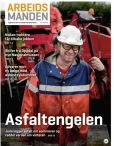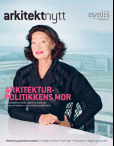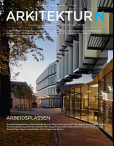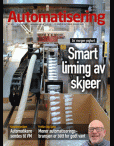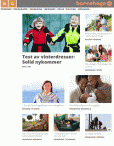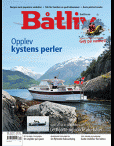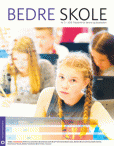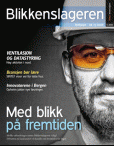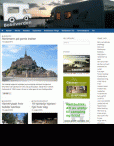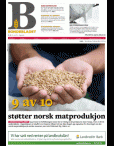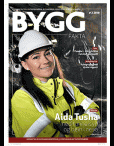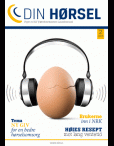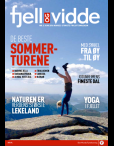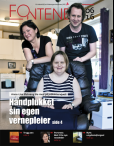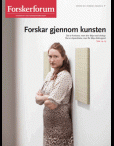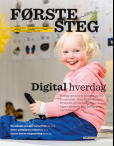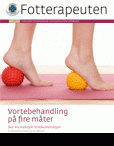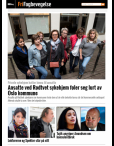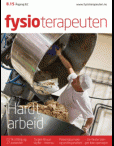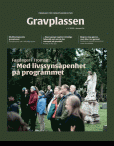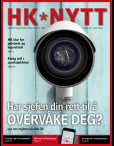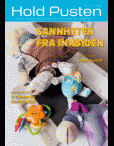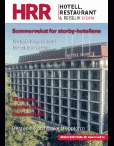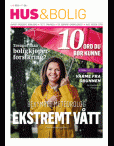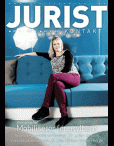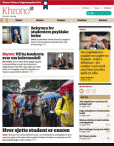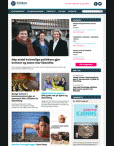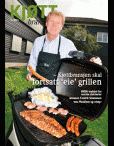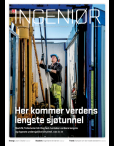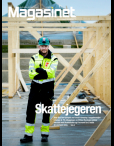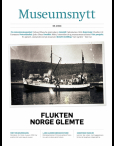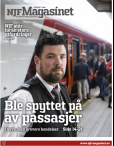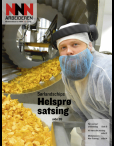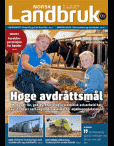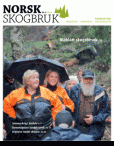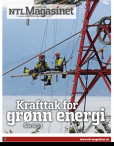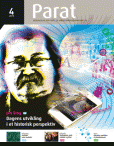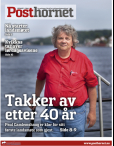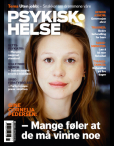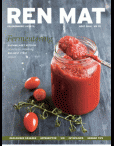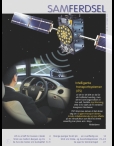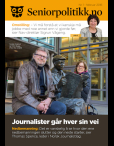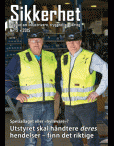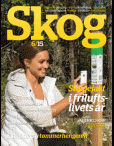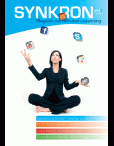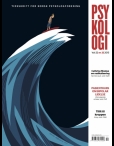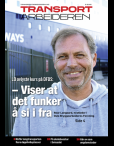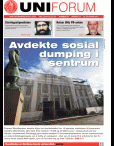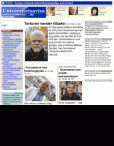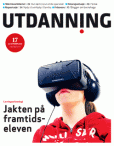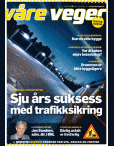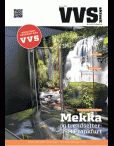Magma
30.10.2018

1 INTRODUCTION In the retail environment, digital technology is one of the main drivers of innovation and transformation. From the use of databases for inventory management
* Ingen av forfatterne er norskspråkelige, og artikkelen publiseres derfor på engelsk.
and customer relationship management to the use of social media for marketing and virtual shops, technology enables the innovation of both onstage and backstage processes. Retailers utilize digital technologies to better connect with their customers, affecting customer purchase decisions when shopping online or in physical stores (Grewal et al., 2017).
The early 2000s saw retailers increasingly adopting advanced technologies in both their physical and online stores to enhance both the store's environment and the shopping experience (Bonetti et al., 2018; Pantano, 2015). This is especially true for what can be termed “consumer-facing" technologies, namely the technologies and devices (e.g. interactive touchscreens, digital signage, RFID tags, beacon technology, magic mirrors, and mobile apps) that the consumer experiences directly while in the physical or online store and at all stages of the retail process: prepurchase, purchase, consumption, and after-sale (Bonetti & Perry, 2017; Bonetti et al., 2018). Among these technologies, augmented reality (AR) and virtual reality (VR) applications are rapidly evolving and are increasingly used in retail environments (Bonetti et al., 2018; Javornik, 2016; McCormick et al., 2014). To fully exploit the potential of new and up-and-coming technologies, one needs to understand the critical retailing areas in which innovations can change the game (Grewal et al., 2017).
1.1 AUGMENTED AND VIRTUAL REALITY
AR and VR have found their place in innovation activities. They have held great promise for a long time; this promise is just beginning to be realized. These new forms of technology-based reality and applications can enhance sensory perceptions and lead to increased user engagement (Grewal et al., 2017; Poncin & Mimoun, 2014).
VR technology represents the far end of the reality- virtuality continuum (Figure 1), enabling the creation of fully immersive virtual environments that visualize “what could be" and that “replace" reality (Steuer, 1992). Recently, major changes in VR systems have taken place, reviving interest in the field; with these changes, VR became accessible, up-to-date, and relevant again (Olszewski et al., 2016; Boletsis et al., 2017). The low acquisition cost of VR hardware transformed VR into a widely accessible and popular technology. At the same time, the quality of virtual environments improved rapidly, offering realistic graphics and full immersion while overcoming the lack of intuitive multiuser capabilities of the past and pushing the boundaries of next-generation social platforms (Boletsis, 2017). VR commerce and retailing utilize VR, head-mounted displays (HMDs), and smartphones to both enhance and drive the shopping experience; this allows retailers to immerse consumers in custom-created virtual worlds, combining traditional online shopping elements with 3D experiences to increase consumer engagement, grow sales, and increase brand loyalty (Dad et al., 2016; Pantano, 2015).
On the other hand, AR technology is closer to reality (Figure 1) on the reality-virtuality continuum because its technical characteristics enable the augmentation of the real environment (Milgram & Kishino, 1994; Azuma, 1997). Over the last decade, advances in the smartphone industry have allowed AR to become widely accessible, enabling users to enjoy memorable AR simply through their smartphones' screens (Billinghurst et al., 2015). AR has emerged as a relevant interactive technology in the retail environment, often developed in the format of smart device applications (Javornik, 2016). The ability of AR to overlay the physical environment with virtual elements such as graphics, video, and audio, which can interact with the physical environment in real time, provides new possibilities for delivering content to consumers (Javornik, 2016). Consequently, AR holds the potential to alter many consumer activities, including information searches and product trials (Javornik, 2016). AR can also help increase trust in online shopping by allowing customers to closely inspect the products they are buying (Karahasanovic et al., 2017).
The AR and VR developments that have taken place over the last few years gave birth to a number of innovations, presented herein, for how businesses operate, communicate their products, build their products, and present themselves (Scholz, 2016; Javornik, 2016; Pantano, 2015; Dad et al., 2016). These two technologies can facilitate the creation, demonstration, and application of several innovative functions, which may attract customers because of these technologies' impressively hedonic qualities and the actual usefulness and added value they can offer to existing services, products, and processes (Grewal et al., 2017; Pantano, 2015).
1.2 THE MOTIVATION FOR A REVIEW OF AR AND VR IN RETAIL INNOVATION
AR and VR have matured enough to have found their place in the retail industry - among other sectors - offering several types of innovation (Bonetti & Perry, 2017). However, there is a lack of research on how AR and VR applications are used for retail innovation and what lessons can be learned from their current use. The current work addresses this need, ultimately examining how AR and VR can be used beneficially for several types of innovation and can help retail businesses to grow.
More specifically, the current work contributes by documenting which AR and VR applications are used in practice for retailing purposes; examining how these applications are used, along with what kinds of innovation they address; and, finally, utilizing the results to synthesize conceptual knowledge and implications. The present work is a review and analysis of AR and VR applications in retail and provides an overview of the current state-of-the-art AR and VR practices in retail innovation. The results of the current review can help stakeholders in the Norwegian retail industry make sense of these practices and, ultimately, ground their future business planning and decision making in the herein synthesized theoretical knowledge.
2 METHODOLOGY
A literature review was conducted to investigate the use of AR and VR applications for retail innovation. The focus of the current review is on commercial, published applications that i) are presented, described, or analysed - to any extent - in peer-reviewed publications and that ii) are used by retail businesses in real life. The peer-review process adds to the credibility and reliability of the publications and the respective presented, described, or analysed applications. The actual use of the VR and AR applications by retail businesses was considered a significant criterion for presenting existing and usable systems beyond the conceptual level. Therefore, research prototypes and conceptual descriptions of applications were not included in the review. This review has two stages: i) documentation of the related AR and VR applications and ii) analysis of the retrieved applications based on the types of innovation they address.
During the first stage, a literature search was conducted to retrieve the related publications and extract the reviewed applications. The publications were collected during March and August 2018 via a Google Scholar and Scopus database search that scanned academic databases including IEEE Xplore, ACM Digital Library, ScienceDirect, and Springer Link. The keywords used were “augmented reality application" or “virtual reality application" and “retail". Furthermore, applicable articles were also identified through backward reference searching, that is, by screening the reference lists of the retrieved publications and specific applications (Vom Brocke et al., 2009). Backward reference searches with Scopus, Google Scholar, and Google Search were utilized by running general searches of specific references and identifying any relevant articles. Each VR or AR application extracted from this process had to fulfil another criterion (mentioned above) to be included: it had to be used in real life and be - or had been - publicly available (e.g. as an app in an app store, app or service in a physical store, etc.).
For the second stage, the extracted AR and VR applications of the first stage were analysed regarding the types of innovation they cover within an organization. Within the context of this work, it was imperative that we cover the full spectrum of innovation; therefore - among the several related theories that exist (Popa, 2014) - we utilized the ten types of innovation typology (Keeley et al., 2013). This typology has been characterized by the EU Open Innovation Strategy and Policy Group as “a powerful framework" for describing the full spectrum of innovation (Curley & Salmelin, 2013). Retail companies and corporations often have several businesses and complicated structures. As recommended by Keeley et al. (2013), we did not analyse entire organizations, instead limiting our investigation to a particular platform within the business.
The ten types of innovation framework, as shown in Table 1, are divided into three color-coded categories. The types on the left side are the most internally focused and distant from customers. Moving toward the right side, the types become increasingly apparent and obvious to the end users. To use a theatrical metaphor, the left of the framework is backstage; the right is onstage (Keeley et al., 2013). Simple innovations use one or two types of innovation, and every company needs to The early 2000s saw retailers increasingly adopting advanced technologies in both their physical and online stores to enhance both the store's environment and the shopping experience (Bonetti et al., 2018; Pantano, 2015). This is especially true for what can be termed “consumer-facing" technologies, namely the technologies and devices (e.g. interactive touchscreens, digital signage, RFID tags, beacon technology, magic mirrors, and mobile apps) that the consumer experiences directly while in the physical or online store and at all stages of the retail process: prepurchase, purchase, consumption, and after-sale (Bonetti & Perry, 2017; Bonetti et al., 2018). Among these technologies, augmented reality (AR) and virtual reality (VR) applications are rapidly evolving and are increasingly used in retail environments (Bonetti et al., 2018; Javornik, 2016; McCormick et al., 2014). To fully exploit the potential of new and up-and-coming technologies, one needs to understand the critical retailing areas in which innovations can change the game (Grewal et al., 2017).
1.1 AUGMENTED AND VIRTUAL REALITY
AR and VR have found their place in innovation activities. They have held great promise for a long time; this promise is just beginning to be realized. These new forms of technology-based reality and applications can enhance sensory perceptions and lead to increased user engagement (Grewal et al., 2017; Poncin & Mimoun, 2014).
VR technology represents the far end of the reality- virtuality continuum (Figure 1), enabling the creation of fully immersive virtual environments that visualize “what could be" and that “replace" reality (Steuer, 1992). Recently, major changes in VR systems have taken place, reviving interest in the field; with these changes, VR became accessible, up-to-date, and relevant again (Olszewski et al., 2016; Boletsis et al., 2017). The low acquisition cost of VR hardware transformed VR into a widely accessible and popular technology. At the same time, the quality of virtual environments improved rapidly, offering realistic graphics and full immersion while overcoming the lack of intuitive multiuser capabilities of the past and pushing the boundaries of next-generation social platforms (Boletsis, 2017). VR commerce and retailing utilize VR, head-mounted displays (HMDs), and smartphones to both enhance and drive the shopping experience; this allows retailers to immerse consumers in custom-created virtual worlds, combining traditional online shopping elements with 3D experiences to increase consumer engagement, grow sales, and increase brand loyalty (Dad et al., 2016; Pantano, 2015).
On the other hand, AR technology is closer to reality (Figure 1) on the reality-virtuality continuum because its technical characteristics enable the augmentation of the real environment (Milgram & Kishino, 1994; Azuma, 1997). Over the last decade, advances in the smartphone industry have allowed AR to become widely accessible, enabling users to enjoy memorable AR simply through their smartphones' screens (Billinghurst et al., 2015). AR has emerged as a relevant interactive technology in the retail environment, often developed in the format of smart device applications (Javornik, 2016). The ability of AR to overlay the physical environment with virtual elements such as graphics, video, and audio, which can interact with the physical environment in real time, provides new possibilities for delivering content to consumers (Javornik, 2016). Consequently, AR holds the potential to alter many consumer activities, including information searches and product trials (Javornik, 2016). AR can also help increase trust in online shopping by allowing customers to closely inspect the products they are buying (Karahasanovic et al., 2017).
The AR and VR developments that have taken place over the last few years gave birth to a number of innovations, presented herein, for how businesses operate, communicate their products, build their products, and present themselves (Scholz, 2016; Javornik, 2016; Pantano, 2015; Dad et al., 2016). These two technologies can facilitate the creation, demonstration, and application of several innovative functions, which may attract customers because of these technologies' impressively hedonic qualities and the actual usefulness and added value they can offer to existing services, products, and processes (Grewal et al., 2017; Pantano, 2015).
Gå til medietand customer relationship management to the use of social media for marketing and virtual shops, technology enables the innovation of both onstage and backstage processes. Retailers utilize digital technologies to better connect with their customers, affecting customer purchase decisions when shopping online or in physical stores (Grewal et al., 2017).
The early 2000s saw retailers increasingly adopting advanced technologies in both their physical and online stores to enhance both the store's environment and the shopping experience (Bonetti et al., 2018; Pantano, 2015). This is especially true for what can be termed “consumer-facing" technologies, namely the technologies and devices (e.g. interactive touchscreens, digital signage, RFID tags, beacon technology, magic mirrors, and mobile apps) that the consumer experiences directly while in the physical or online store and at all stages of the retail process: prepurchase, purchase, consumption, and after-sale (Bonetti & Perry, 2017; Bonetti et al., 2018). Among these technologies, augmented reality (AR) and virtual reality (VR) applications are rapidly evolving and are increasingly used in retail environments (Bonetti et al., 2018; Javornik, 2016; McCormick et al., 2014). To fully exploit the potential of new and up-and-coming technologies, one needs to understand the critical retailing areas in which innovations can change the game (Grewal et al., 2017).
1.1 AUGMENTED AND VIRTUAL REALITY
AR and VR have found their place in innovation activities. They have held great promise for a long time; this promise is just beginning to be realized. These new forms of technology-based reality and applications can enhance sensory perceptions and lead to increased user engagement (Grewal et al., 2017; Poncin & Mimoun, 2014).
VR technology represents the far end of the reality- virtuality continuum (Figure 1), enabling the creation of fully immersive virtual environments that visualize “what could be" and that “replace" reality (Steuer, 1992). Recently, major changes in VR systems have taken place, reviving interest in the field; with these changes, VR became accessible, up-to-date, and relevant again (Olszewski et al., 2016; Boletsis et al., 2017). The low acquisition cost of VR hardware transformed VR into a widely accessible and popular technology. At the same time, the quality of virtual environments improved rapidly, offering realistic graphics and full immersion while overcoming the lack of intuitive multiuser capabilities of the past and pushing the boundaries of next-generation social platforms (Boletsis, 2017). VR commerce and retailing utilize VR, head-mounted displays (HMDs), and smartphones to both enhance and drive the shopping experience; this allows retailers to immerse consumers in custom-created virtual worlds, combining traditional online shopping elements with 3D experiences to increase consumer engagement, grow sales, and increase brand loyalty (Dad et al., 2016; Pantano, 2015).
On the other hand, AR technology is closer to reality (Figure 1) on the reality-virtuality continuum because its technical characteristics enable the augmentation of the real environment (Milgram & Kishino, 1994; Azuma, 1997). Over the last decade, advances in the smartphone industry have allowed AR to become widely accessible, enabling users to enjoy memorable AR simply through their smartphones' screens (Billinghurst et al., 2015). AR has emerged as a relevant interactive technology in the retail environment, often developed in the format of smart device applications (Javornik, 2016). The ability of AR to overlay the physical environment with virtual elements such as graphics, video, and audio, which can interact with the physical environment in real time, provides new possibilities for delivering content to consumers (Javornik, 2016). Consequently, AR holds the potential to alter many consumer activities, including information searches and product trials (Javornik, 2016). AR can also help increase trust in online shopping by allowing customers to closely inspect the products they are buying (Karahasanovic et al., 2017).
The AR and VR developments that have taken place over the last few years gave birth to a number of innovations, presented herein, for how businesses operate, communicate their products, build their products, and present themselves (Scholz, 2016; Javornik, 2016; Pantano, 2015; Dad et al., 2016). These two technologies can facilitate the creation, demonstration, and application of several innovative functions, which may attract customers because of these technologies' impressively hedonic qualities and the actual usefulness and added value they can offer to existing services, products, and processes (Grewal et al., 2017; Pantano, 2015).
1.2 THE MOTIVATION FOR A REVIEW OF AR AND VR IN RETAIL INNOVATION
AR and VR have matured enough to have found their place in the retail industry - among other sectors - offering several types of innovation (Bonetti & Perry, 2017). However, there is a lack of research on how AR and VR applications are used for retail innovation and what lessons can be learned from their current use. The current work addresses this need, ultimately examining how AR and VR can be used beneficially for several types of innovation and can help retail businesses to grow.
More specifically, the current work contributes by documenting which AR and VR applications are used in practice for retailing purposes; examining how these applications are used, along with what kinds of innovation they address; and, finally, utilizing the results to synthesize conceptual knowledge and implications. The present work is a review and analysis of AR and VR applications in retail and provides an overview of the current state-of-the-art AR and VR practices in retail innovation. The results of the current review can help stakeholders in the Norwegian retail industry make sense of these practices and, ultimately, ground their future business planning and decision making in the herein synthesized theoretical knowledge.
2 METHODOLOGY
A literature review was conducted to investigate the use of AR and VR applications for retail innovation. The focus of the current review is on commercial, published applications that i) are presented, described, or analysed - to any extent - in peer-reviewed publications and that ii) are used by retail businesses in real life. The peer-review process adds to the credibility and reliability of the publications and the respective presented, described, or analysed applications. The actual use of the VR and AR applications by retail businesses was considered a significant criterion for presenting existing and usable systems beyond the conceptual level. Therefore, research prototypes and conceptual descriptions of applications were not included in the review. This review has two stages: i) documentation of the related AR and VR applications and ii) analysis of the retrieved applications based on the types of innovation they address.
During the first stage, a literature search was conducted to retrieve the related publications and extract the reviewed applications. The publications were collected during March and August 2018 via a Google Scholar and Scopus database search that scanned academic databases including IEEE Xplore, ACM Digital Library, ScienceDirect, and Springer Link. The keywords used were “augmented reality application" or “virtual reality application" and “retail". Furthermore, applicable articles were also identified through backward reference searching, that is, by screening the reference lists of the retrieved publications and specific applications (Vom Brocke et al., 2009). Backward reference searches with Scopus, Google Scholar, and Google Search were utilized by running general searches of specific references and identifying any relevant articles. Each VR or AR application extracted from this process had to fulfil another criterion (mentioned above) to be included: it had to be used in real life and be - or had been - publicly available (e.g. as an app in an app store, app or service in a physical store, etc.).
For the second stage, the extracted AR and VR applications of the first stage were analysed regarding the types of innovation they cover within an organization. Within the context of this work, it was imperative that we cover the full spectrum of innovation; therefore - among the several related theories that exist (Popa, 2014) - we utilized the ten types of innovation typology (Keeley et al., 2013). This typology has been characterized by the EU Open Innovation Strategy and Policy Group as “a powerful framework" for describing the full spectrum of innovation (Curley & Salmelin, 2013). Retail companies and corporations often have several businesses and complicated structures. As recommended by Keeley et al. (2013), we did not analyse entire organizations, instead limiting our investigation to a particular platform within the business.
The ten types of innovation framework, as shown in Table 1, are divided into three color-coded categories. The types on the left side are the most internally focused and distant from customers. Moving toward the right side, the types become increasingly apparent and obvious to the end users. To use a theatrical metaphor, the left of the framework is backstage; the right is onstage (Keeley et al., 2013). Simple innovations use one or two types of innovation, and every company needs to The early 2000s saw retailers increasingly adopting advanced technologies in both their physical and online stores to enhance both the store's environment and the shopping experience (Bonetti et al., 2018; Pantano, 2015). This is especially true for what can be termed “consumer-facing" technologies, namely the technologies and devices (e.g. interactive touchscreens, digital signage, RFID tags, beacon technology, magic mirrors, and mobile apps) that the consumer experiences directly while in the physical or online store and at all stages of the retail process: prepurchase, purchase, consumption, and after-sale (Bonetti & Perry, 2017; Bonetti et al., 2018). Among these technologies, augmented reality (AR) and virtual reality (VR) applications are rapidly evolving and are increasingly used in retail environments (Bonetti et al., 2018; Javornik, 2016; McCormick et al., 2014). To fully exploit the potential of new and up-and-coming technologies, one needs to understand the critical retailing areas in which innovations can change the game (Grewal et al., 2017).
1.1 AUGMENTED AND VIRTUAL REALITY
AR and VR have found their place in innovation activities. They have held great promise for a long time; this promise is just beginning to be realized. These new forms of technology-based reality and applications can enhance sensory perceptions and lead to increased user engagement (Grewal et al., 2017; Poncin & Mimoun, 2014).
VR technology represents the far end of the reality- virtuality continuum (Figure 1), enabling the creation of fully immersive virtual environments that visualize “what could be" and that “replace" reality (Steuer, 1992). Recently, major changes in VR systems have taken place, reviving interest in the field; with these changes, VR became accessible, up-to-date, and relevant again (Olszewski et al., 2016; Boletsis et al., 2017). The low acquisition cost of VR hardware transformed VR into a widely accessible and popular technology. At the same time, the quality of virtual environments improved rapidly, offering realistic graphics and full immersion while overcoming the lack of intuitive multiuser capabilities of the past and pushing the boundaries of next-generation social platforms (Boletsis, 2017). VR commerce and retailing utilize VR, head-mounted displays (HMDs), and smartphones to both enhance and drive the shopping experience; this allows retailers to immerse consumers in custom-created virtual worlds, combining traditional online shopping elements with 3D experiences to increase consumer engagement, grow sales, and increase brand loyalty (Dad et al., 2016; Pantano, 2015).
On the other hand, AR technology is closer to reality (Figure 1) on the reality-virtuality continuum because its technical characteristics enable the augmentation of the real environment (Milgram & Kishino, 1994; Azuma, 1997). Over the last decade, advances in the smartphone industry have allowed AR to become widely accessible, enabling users to enjoy memorable AR simply through their smartphones' screens (Billinghurst et al., 2015). AR has emerged as a relevant interactive technology in the retail environment, often developed in the format of smart device applications (Javornik, 2016). The ability of AR to overlay the physical environment with virtual elements such as graphics, video, and audio, which can interact with the physical environment in real time, provides new possibilities for delivering content to consumers (Javornik, 2016). Consequently, AR holds the potential to alter many consumer activities, including information searches and product trials (Javornik, 2016). AR can also help increase trust in online shopping by allowing customers to closely inspect the products they are buying (Karahasanovic et al., 2017).
The AR and VR developments that have taken place over the last few years gave birth to a number of innovations, presented herein, for how businesses operate, communicate their products, build their products, and present themselves (Scholz, 2016; Javornik, 2016; Pantano, 2015; Dad et al., 2016). These two technologies can facilitate the creation, demonstration, and application of several innovative functions, which may attract customers because of these technologies' impressively hedonic qualities and the actual usefulness and added value they can offer to existing services, products, and processes (Grewal et al., 2017; Pantano, 2015).








